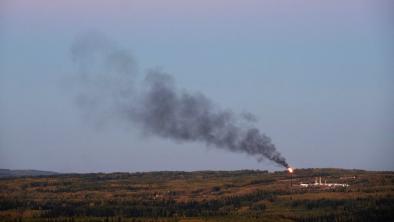New run-of-river eco-concerns raised
Squamish Chief

‘Ramping’ at Ashlu, Mamquam plants under scrutiny; charges possible
After uncovering alarming information on Sea to Sky Corridor run-of-river power plants, a B.C.-based environmental organization is again calling for a moratorium to cap the industry.
Gwen Barlee heard rumours that the hydro plant on Ashlu Creek was killing fish. Nine months ago, the Wilderness Committee’s policy director filed a freedom of information (FOI) request for documents on the Innergex-owned facility’s environmental history. What she discovered was worse than she expected.
“[The run-of-river plant] had ongoing, multiple environmental transgressions and issues,” Barlee said. “We just can’t play Russian roulette with our wild fish streams and that is what is happening right now.”
In a two-year period, Barlee said she counted 23 incidents resulting from ramping — a procedure in which power facilities raise and lower water levels in the stream. That presents dangers to fish, as fry get pushed into outlying stream areas, only to be stranded there when water levels recede.
Documents showed that one incident in 2010 left 166 trout and salmon fry on the Squamish River tributary’s bank. Less than half survived to be returned to the creek.
“I am guessing that the fish that were recovered were just a small percentage of the actual fish that were affected or killed by the ramping problems,” Barlee said, noting that fry are difficult to spot.
Water equals money for run-of-river projects, often referred to as independent power projects (IPPs). The more volume pushed through a generator, the more power created, Barlee said, noting Department of Fisheries and Oceans (DFO) officials reported concerns that at times there wasn’t enough flow in Ashlu’s fish ladder, making it impassable for adult rainbow trout.
Innergex upgraded its automated control system regulating flows, the company’s vice-president Richard Blanchet said. Most of the incidents happened during facility testing, the most recent having occurred in the summer of 2011, he noted. The fish ladder is functional and the company operates it during spawning season and at other times of the year, Blanchet said, adding that the plant is continually monitored.
The issues with the Ashlu project aren’t unique. Similar information was uncovered at the Atlantic Power-operated power plant on the Mamquam River. Before switching hands from Capital Power to Atlantic in November 2011, DFO officials were aware of several incidents in which salmon fry were stranded or killed by low water flows, DFO spokesperson Dan Bate wrote in an email to The Chief.
The department issued Capital warning letters. As a result, the company upgraded its turbines and computer system, Bate said.
DFO is investigating one of the local run-of-river operations to determine whether charges should be laid, Bate wrote. He declined to say which one or what the charges might be. An employee from Atlantic Power said the Boston-based company had no comment.
Looking ahead, in collaboration with the Clean Energy B.C. and the provincial government, DFO is developing a ramping guide for run-of-river projects, Bate said.
At a local level, Squamish-Lillooet Regional District officials are hoping to exercise some sort of influence over IPP operating standards. Although local governments don’t have jurisdiction over such projects, District of Squamish planner Sabina Foofat said consistent regional standards could benefit Squamish.
The projects affect more than just streams, Foofat noted during Tuesday’s (March 13) Committee of the Whole meeting of Squamish council. They sometimes bring power lines through town and/or conflict with recreational uses.
One hundred and twenty of the province’s 800 run-of-river water licences are in the corridor. The area’s steeply sloping, fast-flowing streams and their proximity to the B.C. Hydro power grid make it a hot spot for IPPs.
Run of River Power Inc. currently has application with the province to build a 25-megawatt IPP on Skookum Creek,12 kilometres east of Squamish near the creek's confluence with the Mamquam River. If all the required permits are secured, ROR Power aims to start construction this year.
Further south, Flash Power Ltd. is looking to construct a 10-megawatt run-of-river project on the upper Britannia Creek. The proponent aims to have it operational within the next four years.


